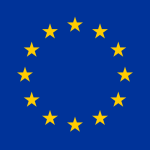20 Jul What Are the Three Lines of Defence in Anti-Money Laundering?
The concept of the “three lines of defence” is a critical framework in risk management and internal control systems. This model is particularly important for organisations dealing with Anti-Money Laundering (AML) practices. Understanding and implementing this framework can significantly enhance an organisation’s ability to manage risks effectively, ensuring compliance with regulations and maintaining robust internal controls. In this article, we will explore the three lines of defence in detail and discuss how AML training provided by KYC Lookup, a UK-based fully accredited training provider, can help AML professionals develop a comprehensive understanding of AML practices.
What Are the Three Lines of Defence?
The three lines of defence model is a risk management framework that divides responsibilities for risk and control into three distinct layers. Each line plays a unique role in ensuring the organisation’s risk management strategy is robust and effective.
First Line of Defence: Operational Management
The first line of defence consists of the business operations and process owners. These individuals and teams are responsible for managing risks and implementing controls directly within their daily activities. Their primary role is to identify, assess and mitigate risks as part of their operational responsibilities.
Operational managers are best positioned to manage risks as they have the most direct interaction with the processes and are most familiar with the potential threats. They must ensure that all activities are performed in accordance with established procedures and controls, thus preventing issues from arising or escalating.
Second Line of Defence: Risk Management and Compliance Functions
The second line of defence involves risk management and compliance functions, which provide oversight and guidance to the first line. These functions are responsible for developing and implementing policies, frameworks, tools and systems to manage risks and ensure compliance with regulatory requirements.
The risk management and compliance teams act as advisors and monitors. They help operational managers understand risk management processes, monitor the effectiveness of controls and ensure that the organisation adheres to relevant laws and regulations. This line of defence ensures that the first line’s efforts are consistent and effective across the organisation.
Third Line of Defence: Internal Audit
The third line of defence is the internal audit function, which provides independent assurance on the effectiveness of the first and second lines of defence. Internal auditors assess the entire risk management framework, including the activities of both the operational management and the risk management functions.
Internal audit’s role is to provide an objective evaluation of the organisation’s risk management, control and governance processes. This includes identifying areas for improvement, ensuring that controls are functioning as intended and verifying that the organisation is compliant with relevant regulations.
The Importance of the Three Lines of Defence in AML
Anti-Money Laundering (AML) is a critical area where the three lines of defence model is particularly relevant. Effective AML practices require a comprehensive approach to managing risks and ensuring compliance with regulations. Implementing the three lines of defence model can significantly enhance an organisation’s ability to detect, prevent and mitigate money laundering activities.
First Line of Defence in AML
In the context of AML, the first line of defence involves operational staff, such as customer-facing employees and transaction processing teams. These individuals are responsible for performing due diligence, identifying suspicious activities and reporting them in accordance with established procedures.
Operational staff must be well-trained in AML practices to recognise potential money laundering activities. KYC Lookup, a UK-based fully accredited training provider, offers comprehensive AML training programs designed to equip operational staff with the knowledge and skills needed to effectively manage AML risks. This training ensures that employees are aware of the red flags and understand the importance of their role in the AML framework.
Second Line of Defence in AML
The second line of defence in AML includes the compliance and risk management teams. These teams are responsible for developing and implementing AML policies and procedures, conducting risk assessments and providing guidance to operational staff. They also monitor transactions and activities to identify potential AML risks and ensure compliance with regulatory requirements.
KYC Lookup’s AML training programs are designed to support compliance and risk management professionals by providing them with a deep understanding of AML regulations and best practices. This training helps these professionals develop effective AML frameworks, conduct thorough risk assessments and stay up-to-date with the latest regulatory changes.
Third Line of Defence in AML
The third line of defence in AML involves the internal audit function, which provides independent assurance on the effectiveness of the organisation’s AML framework. Internal auditors assess the adequacy of AML controls, verify compliance with policies and regulations and identify areas for improvement.
KYC Lookup offers specialised AML training for internal auditors, focusing on the unique challenges and requirements of auditing AML processes. This training ensures that internal auditors are well-equipped to provide an objective evaluation of the organisation’s AML framework and recommend improvements where necessary.
Enhancing AML Knowledge with KYC Lookup
KYC Lookup, a UK-based fully accredited training provider, offers a range of AML training programs designed to meet the needs of AML professionals at all levels. Their training courses cover various aspects of AML, from basic concepts to advanced practices, ensuring that participants have a thorough understanding of AML regulations and best practices.
Benefits of AML Training with KYC Lookup
- Comprehensive Curriculum: KYC Lookup’s AML training programs cover all key aspects of AML, including regulatory requirements, risk assessment, transaction monitoring and reporting suspicious activities.
- Expert Instructors: The training programs are led by experienced AML professionals who bring practical insights and real-world examples to the learning experience.
- Flexible Learning Options: KYC Lookup offers both online and in-person training options, allowing participants to choose the format that best suits their needs.
- Accreditation: As a fully accredited training provider, KYC Lookup ensures that their training programs meet the highest standards of quality and relevance.
- Continuous Updates: KYC Lookup regularly updates their training materials to reflect the latest regulatory changes and industry best practices, ensuring that participants stay current with evolving AML requirements.
In conclusion, the three lines of defence model is a vital framework for effective risk management and internal control, particularly in the context of AML. By clearly defining roles and responsibilities across the organisation, this model ensures that risks are identified, managed and mitigated effectively. KYC Lookup, a UK-based fully accredited training provider, offers comprehensive AML training programs that support AML professionals in developing a deep understanding of AML practices and regulations. Through their expert-led courses, KYC Lookup helps organisations strengthen their AML frameworks and enhance their overall risk management strategies.




No Comments